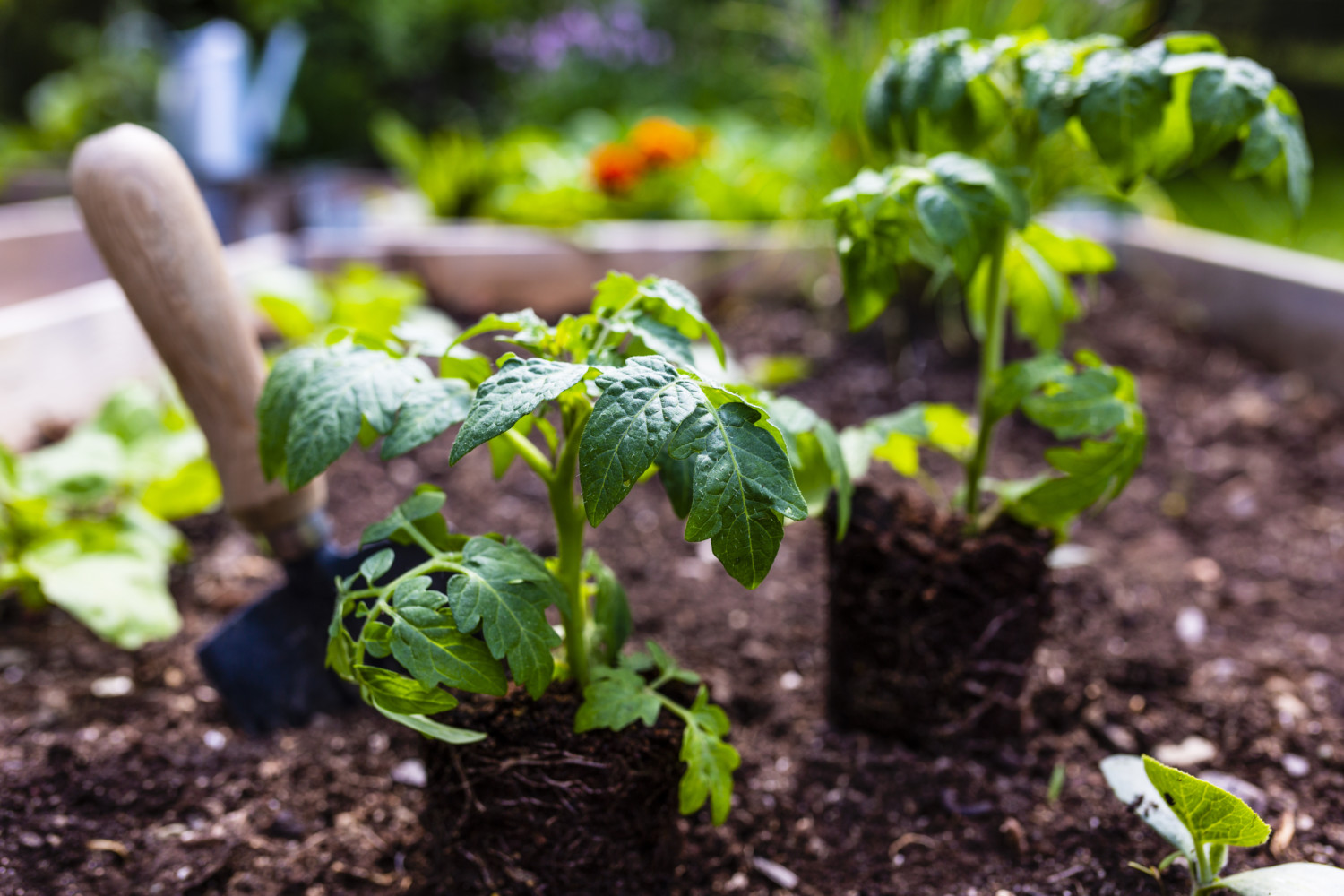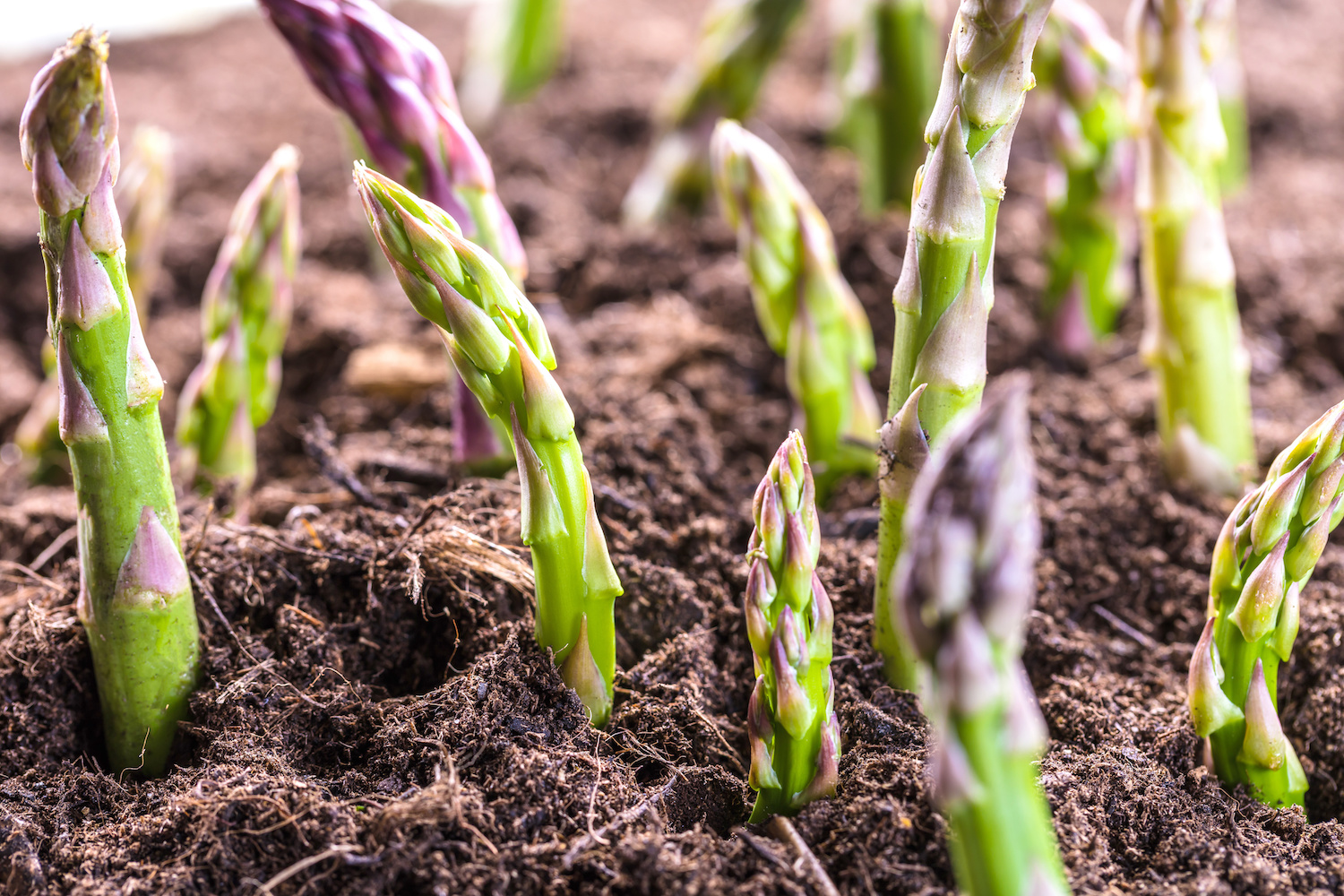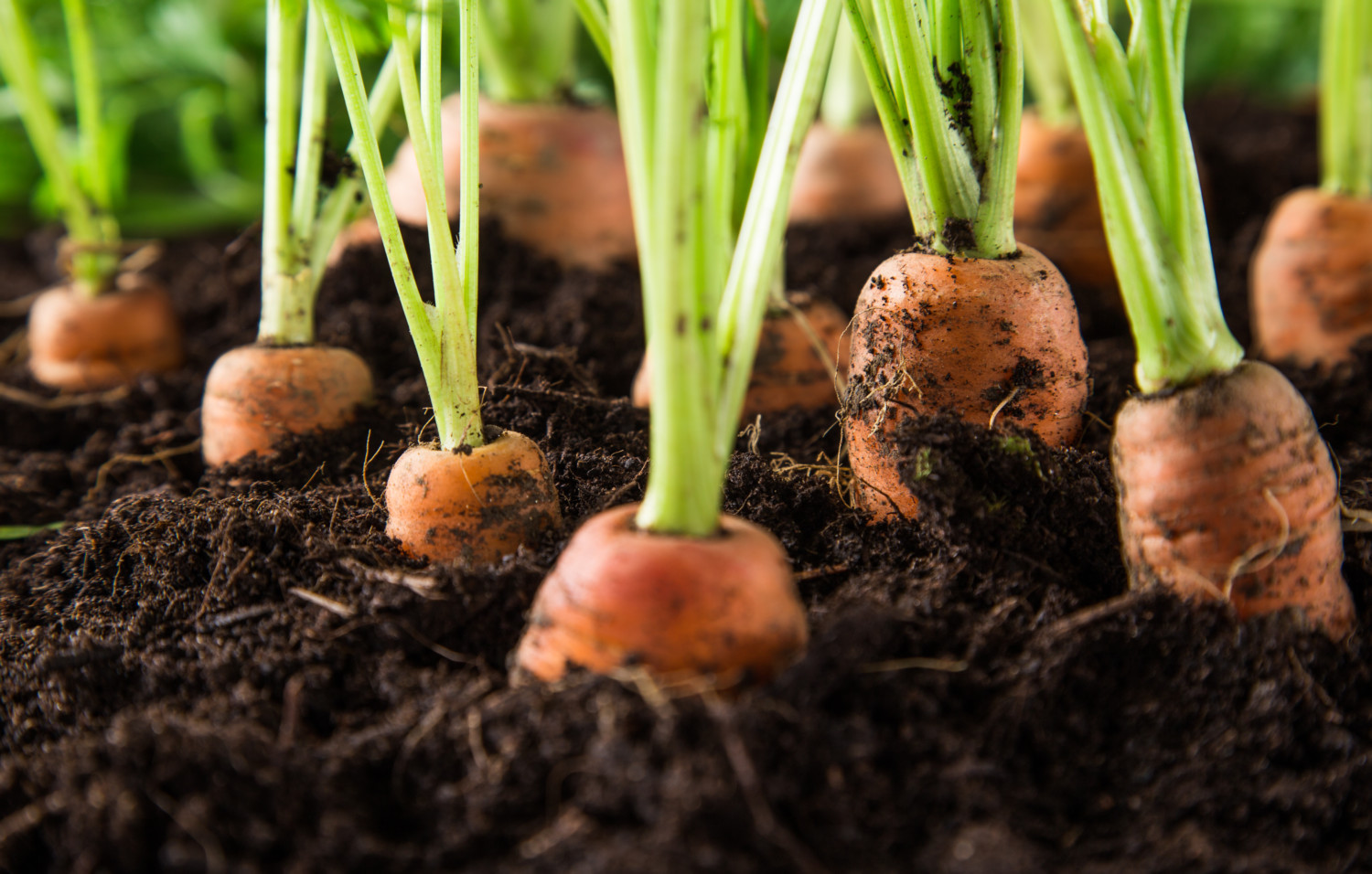The products and services mentioned below were selected independent of sales and advertising. However, Simplemost may receive a small commission from the purchase of any products or services through an affiliate link to the retailer's website.
When you’re creating a vegetable garden, companion planting is an important consideration. It involves positioning different crops close to each other to boost growth, improve pest control, encourage pollination and increase nutrient absorption. Some plants work well together, while others do each other no favors at all. By selecting the right companion plants for tomatoes, you can create the best growing environment for them to thrive.
The practice of selecting companion plants hasn’t been scientifically validated, but the anecdotal evidence is strong. Over hundreds of years of growing vegetables, gardeners have figured out the best companion plants for tomatoes through trial and error, leading The Spruce to call it, “part experience, part folklore and part wishful thinking.”
Gardening Know How reports that surrounding your tomato plants with the right companies will create a healthier plant that yields more tomatoes. Choosing the wrong companions will make it tough to grow tomatoes, and some could even kill otherwise healthy plants.

Even formerly skeptical gardeners are coming round to the idea of companion planting. When Jessica Walliser was writing her book “Plant Partners: Science-Based Companion Planting Strategies for the Vegetable Garden,” her goal was to “look at companion planting through a science lens.”
Writing in Savvy Gardening, Walliser revealed that in the research community, the term “companion planting” isn’t used. Instead, it’s known as interplanting, intercropping or creating a polyculture.
“But no matter what you call it, there’s some fascinating scientific research out there that looks at ways we can combine plants together to gain a benefit,” wrote Walliser. “Sometimes the partnerships consist of two plants grown near each other. Other times, the plants are planted in succession with one another (one crop after another in the same space). And still other times, it’s more about planting a plethora of plants together to create a diverse, more resilient growing environment.”
The good news is that tomatoes are good planting companions for a large number of other plants. Those little red guys are pretty sociable in the vegetable garden, and the benefits they reap include improved health and strength, better flavor and even protection from insects and diseases.
Here are some of the companion plants the experts recommend planting next to your tomatoes.
Best Companion Plants For Tomatoes
Amaranth is said to help repel pests by attracting predatory beneficial insects (i.e. the ones that get rid of the pests that will try to wreck your tomatoes).
Asparagus planted in close proximity to tomatoes will ward off nematodes (parasitic worms).

Basil repels insects (even fruit flies) and encourages growth, and it might even make your tomatoes taste better.
Walliser recommends beans (pole or bush beans, specifically) to lure in bumblebees to pollinate your tomatoes.
Borage repels tomato hornworms, and it improves flavor and growth.
Carrots can help to loosen the soil, meaning it holds water and stops the tomato plants from drying out. Gardening Know How recommends starting carrots when the tomato plants are small, so they grow in conjunction. The carrots will then be ready to harvest around the time the tomato plants are taking over the space.

Lettuce provides a living mulch, which helps to keep the soil cool and moist.
Radish planted around the base of your tomato plants will keep flea beetles away, Walliser says.
Other good companion plants for tomatoes include bee balm, calendula (pot marigold), celery, chives, cleome, cosmos, cucumber, garlic, lemon balm, lettuce, marigold, mint, nasturtium, onion, parsley, peas, sage and squash.
Worst Companion Plants For Tomatoes
At the other end of the scale are bad companion plants for tomatoes. Unless your experience tells you otherwise, it’s best to keep these away from your toms.
All members of the cabbage (Brassica) family stunt the growth of tomato plants. This includes broccoli, Brussels sprouts, cabbage, collards, cauliflower, kale, kohlrabi, rutabaga and turnip.
Corn is susceptible to the same pests as the tomato plant (the earworm and the fruitworm), so if they’re grown in close proximity your vegetable garden could quickly be destroyed.
Mature dill plants stop tomato plants from growing, so keep a distance between them.
Although eggplant, peppers and potatoes are nightshades like tomatoes, they shouldn’t be rubbing shoulders in the vegetable garden. In fact, nightshade plants shouldn’t be planted near each other or in place of each other for at least three years, says The Spruce. Hornworms love the foliage and fruit of tomatoes, peppers and eggplants, and it doesn’t take long for them to wreak havoc on the plants. Plus, planting tomatoes near potatoes can make the potatoes more susceptible to potato blight.

If you plant tomatoes under walnut or butternut trees, they’ll never reach their full potential, due to an allelopathic chemical called juglone released by the leaves, nuts and roots of the trees. There’s also a risk of walnut wilt, which produces sudden, dramatic symptoms. According to Our State, a plant with healthy green tomatoes can severely wilt in just one day, and within a few days, walnut wilt can kill the entire plant.
Tomatoes don’t just take from other plants; they give back, too! Experienced vegetable gardeners have found that tomatoes can help asparagus, gooseberries and roses grow.
This story originally appeared on Simplemost. Checkout Simplemost for additional stories.


